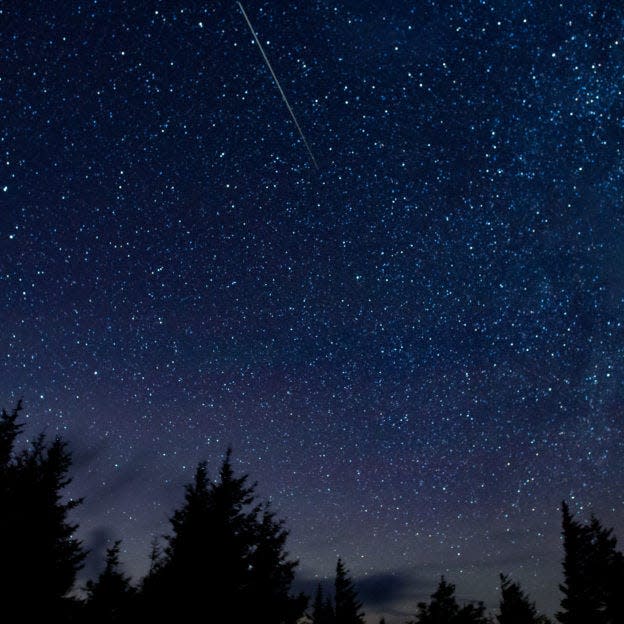Lyrid meteor shower this weekend breaks long dry spell of nighttime sky shows
A lengthy pause in meteor showers is broken this weekend under the glaring stare of a waxing gibbous moon.
The annual Lyrid meteor shower peaks late Sunday, April 21, into early Monday, April 22, and although a forecast for continued dry weather and mostly clear nights would normally provide good viewing conditions, April's full pink moon will try to steal the show.
An outburst of meteors from the Lyrids happens about every 60 years with the next one due in 2042.
When is the next meteor shower in 2024?
January's Quadrantids meteor shower was the last display of note before the Lyrids spring debut sets off a string of summer showers including May's Eta Aquarids, July's Southern delta Aquariids and August's Perseids.
April's moon doesn't become full until Tuesday, but it will give off enough light to interfere with the Lyrid shower, which in the best viewing conditions can throw up to 20 meteors an hour.
What time is the Lyrid meteor shower on April 22?

Pre-dawn hours offer the best viewing opportunities because the radiant point from where the meteors appear to originate is highest in the sky. The radiant for the Lyrids is near the bright, bluish-colored star Vega in the constellation Lyra the Harp.
More: Solar eclipse 2024: Palm Beach County sees rare sun event. 'A life-changing event.'
The Lyrids are space dust from the comet Thatcher (C/1861 G1), which orbits the sun every 415 years. The comet was discovered in 1861, but the shower has been observed for more than 2,600 years.
Our planet annually crosses the path of the comet in late April, with bits shedding into Earth's upper atmosphere at 110,000 miles per hour, according to EarthSky.org.
According to NASA, comet Thatcher was discovered in April 1861 by New York City resident Alfred Thatcher, who the comet is named after.
Tips to watching the Lyrid meteor shower
As with most meteor showers, the key to watching is patience.
Because the moon will interfere with this year's show, EarthSky.org recommends finding a moon shadow to stand in to block the moon. A building or other obstruction that reduces the direct glare of the moon can aid in viewing.
"Ensconced within a moon shadow, and far from the glow of city lights, the night all of a sudden darkens and can help you see more meteors," EarthSky notes. "You can’t run from the moon, but you can sure hide from it."
Kimberly Miller is a veteran journalist for The Palm Beach Post, part of the USA Today Network of Florida. She covers real estate and how growth affects South Florida's environment. Subscribe to The Dirt for a weekly real estate roundup. If you have news tips, please send them to kmiller@pbpost.com. Help support our local journalism, subscribe today.
This article originally appeared on Palm Beach Post: Lyrid meteor shower 2024 is this weekend, what time, and how to watch
